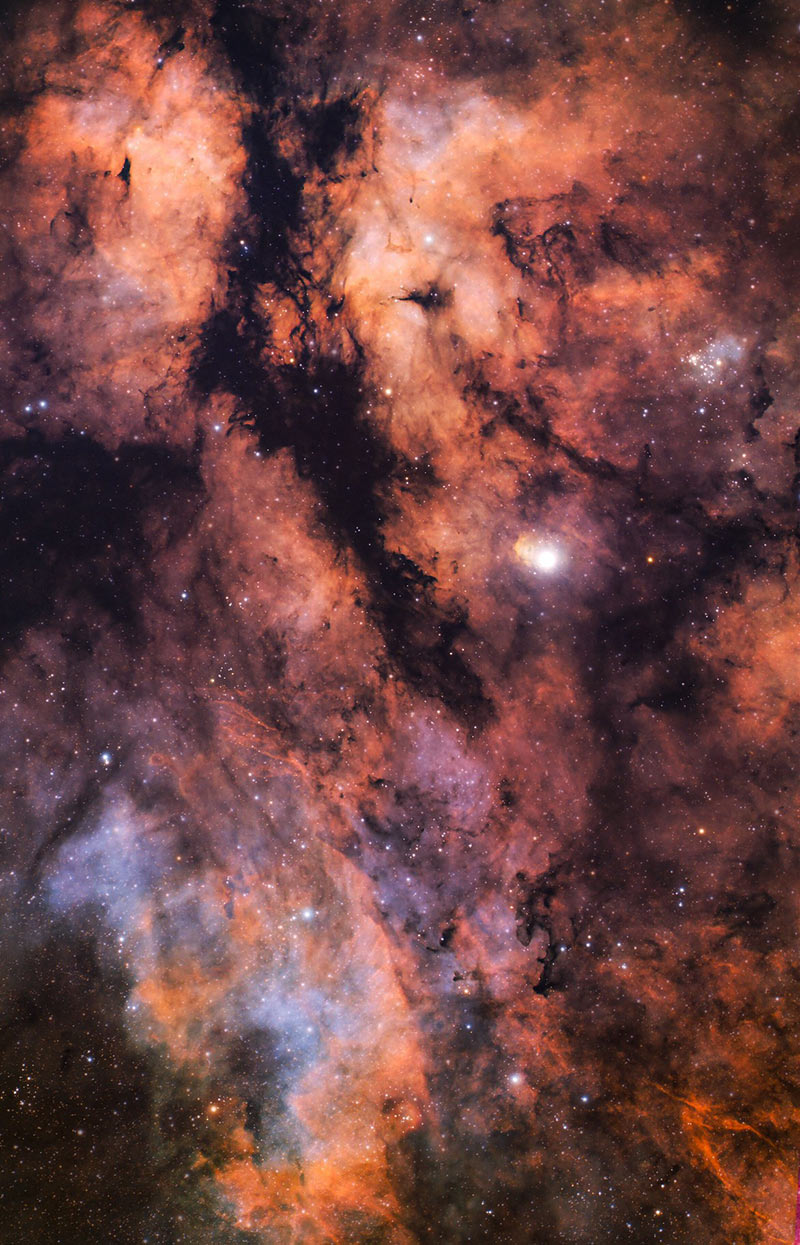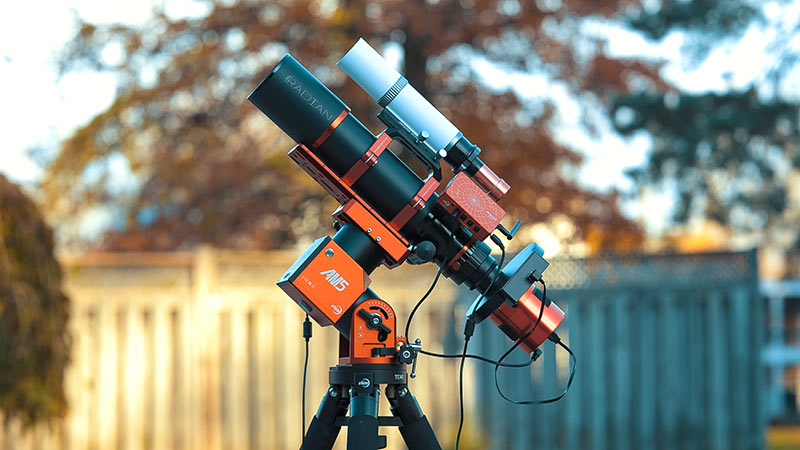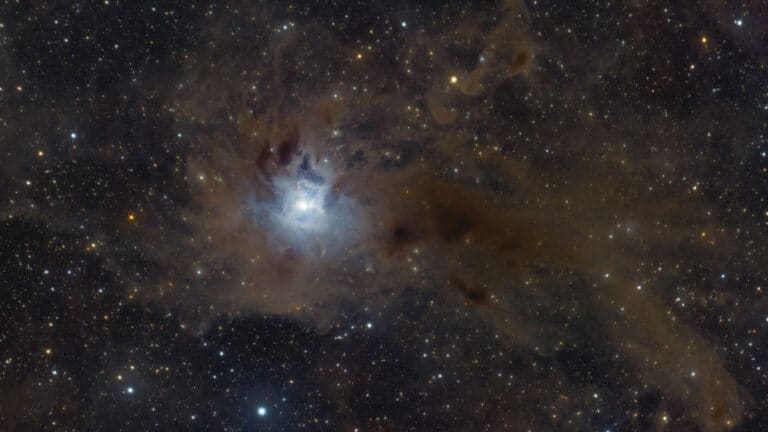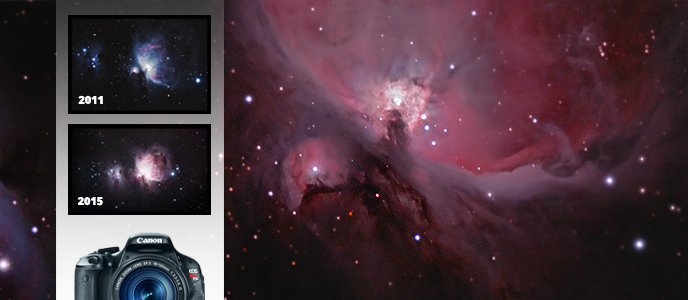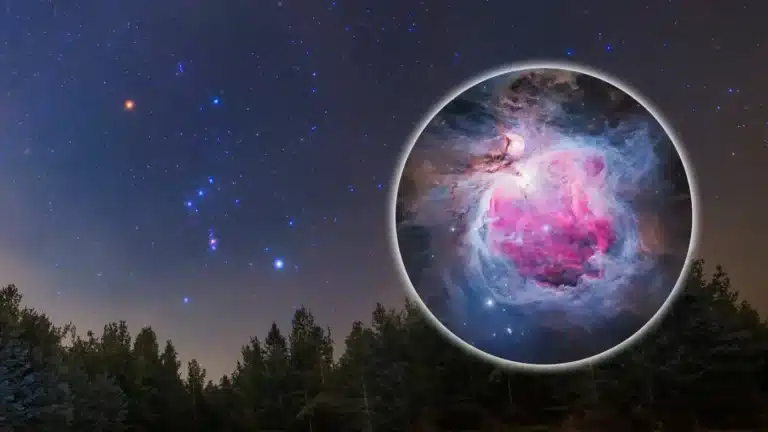Sadr Region in Cygnus | IC 1318 and Emission Nebula
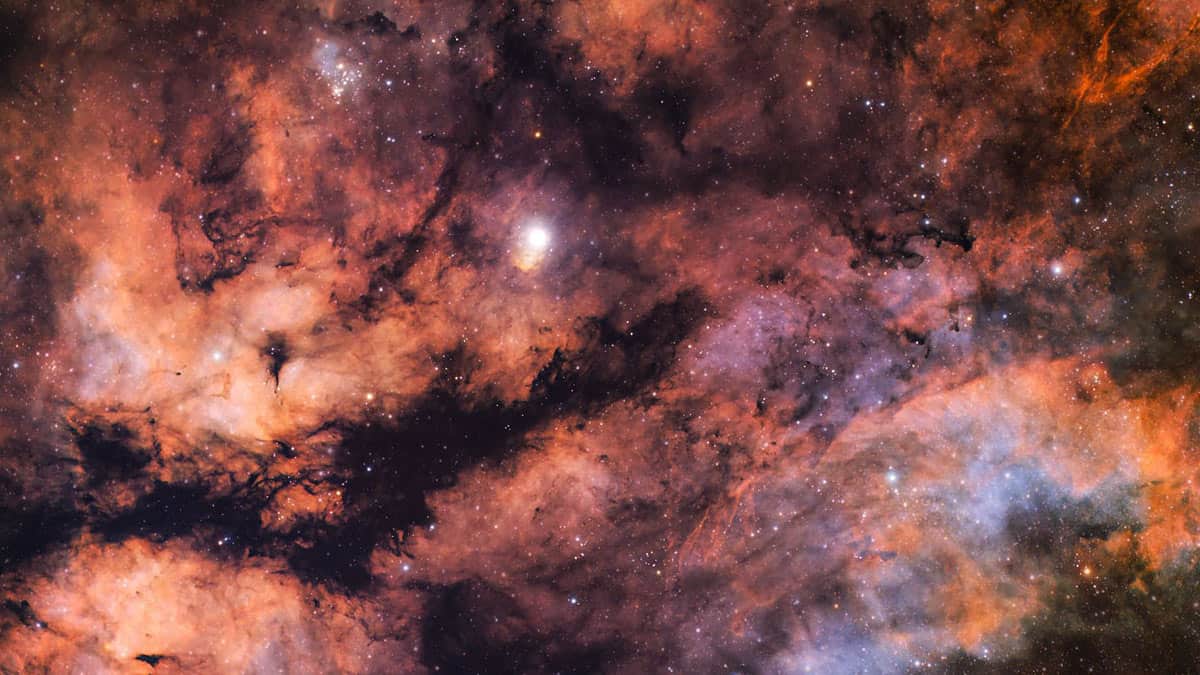
The Sadr Region in the Cygnus refers to the hydrogen emission nebula surrounding Sadr (Gamma Cygni) in the cross of the constellation Cygnus. In this area of the night sky, you will also find even more deep-sky astrophotography targets such as the Butterfly Nebula (IC 1318), and the Crescent Nebula.
Sadr (a supergiant) has 12 times the mass of our Sun and about 150 times our Sun’s radius. IC 1318 is considered to be the diffuse emission nebula surrounding Sadr.
The Sadr Region in Cygnus. 6 Hours Total Exposure. ZWO ASI2600MM Pro. Radian 75.
The image above shows the bright star, Sadr, at the top right of the image. This photo includes 6 hours of total exposure time using a monochrome CMOS dedicated astronomy camera and narrowband filters.
Although Sadr and the IC 1318 nebula are seen together from our vantage point on Earth, it is interesting to note that the star that illuminates IC 1318 is a hot, blue O9-class star obscured by interstellar dust.
The nebula you see in the image above is located much farther away than Sadr (about 5000 light-years).
Photo Details:
- Total Integration: 6 Hours (2 Hours each filter)
- Camera: ZWO ASI2600MM Pro
- Filters: Chroma 3nm SHO
- Telescope: Radian 75 Petzval APO
- Tracking Mount: ZWO AM5 Mount
- Processing: DeepSkyStacker, Adobe Photoshop
The images were captured from my backyard in the city (Bortle Scale Class 6) using a ZWO ASIAIR Plus. From my latitude, the best time to photograph this nebula is between the months of June-September).
To get a better understanding of the way I process each and every one of my astrophotography images, please consider purchasing my premium image processing guide.
The telescope equipment used for the photo above. (see my full list of astrophotography equipment)
The Sadr region is an excellent deep-sky target to practice your astrophotography skills on, no matter which camera and telescope you are using. Sadr is very bright, making it much easier to focus your camera than an area of the sky without any bright stars.
Also, this area is full of dynamic emission nebulae. If you point your camera and telescope toward Sadr, you will reveal plenty of hydrogen gas in the area through a long exposure (tracked) photo at any magnification. For this object, it is often most rewarding to photograph it using a wider focal length of 500mm or shorter.
Related Post: 10 of the Best Telescopes Astrophotography Telescopes Available
Sadr (Gamma Cygni)
Sadr is a yellow-white supergiant star with an apparent magnitude of 2.23. It is Cygnus’ second brightest star (Deneb is the brightest).
Scientists estimate that Sadr lies approximately 1,800 light-years from Earth. It marks the intersection of the Northern Cross, a prominent asterism in the northern hemisphere sky. Sadr is surrounded by a rich field of the Milky Way stars and the diffuse emission nebula IC 1318.
The star map below shows the location of Sadr and the many interesting deep-sky objects in the area. The North America Nebula is not too far away from this region.
The Sadr Region in Cygnus. (Image created using Stellarium).
Astrophotography
The photo below centers the image frame around Sadr and showcases the diffuse emission nebula in this area. This photo was captured using a Canon EOS Rebel Xsi and a Canon EF 300mm F/4L lens. The camera was mounted to an iOptron SkyGuider Pro mount to track the night sky.
This photo is typical of what you can expect to achieve with a DSLR camera and a telephoto lens.
The star, Sadr, surrounded by a hydrogen emission nebula.
At this focal length, the Butterfly Nebula and NGC 6916 are visible. An even wider image will reveal the many interesting deep-sky objects in the Sadr region.
Using a DSLR and Telescope
Compare this image to one shot with the William Optics RedCat 51 Petzval APO, at a 250mm focal length. The photo captures a massive area of nebulae in the Cygnus constellation.
For this image, the Triad Ultra filter was used to help isolate the nebula regions from a light-polluted backyard sky.
The Sadr Region in Cygnus captured using a telescope with a 250mm focal length.
This image was one of my favorite photos taken in 2019 (see my top 10 best images). The Sadr region can be fully appreciated when captured using a wide-field setup like this.
Annotated Image
Below, you’ll find an annotated image of the Sadr region that marks the many deep-sky objects found in this region. This includes the NGC 6910 and NGC 6913 star clusters, IC 1318, and the bright star, 34Cyg (P Cygni).
You can easily annotate your own astrophotography images using the astrometric calibration service at Astrometry.net.
